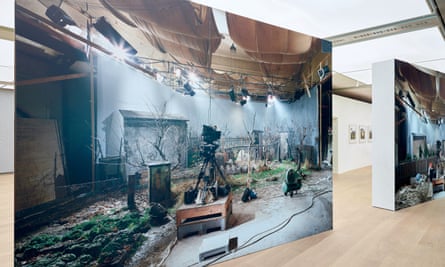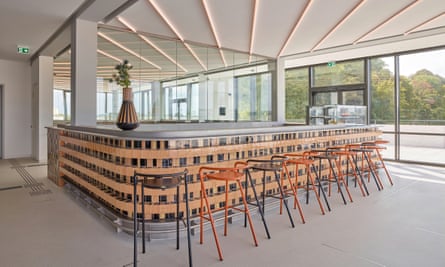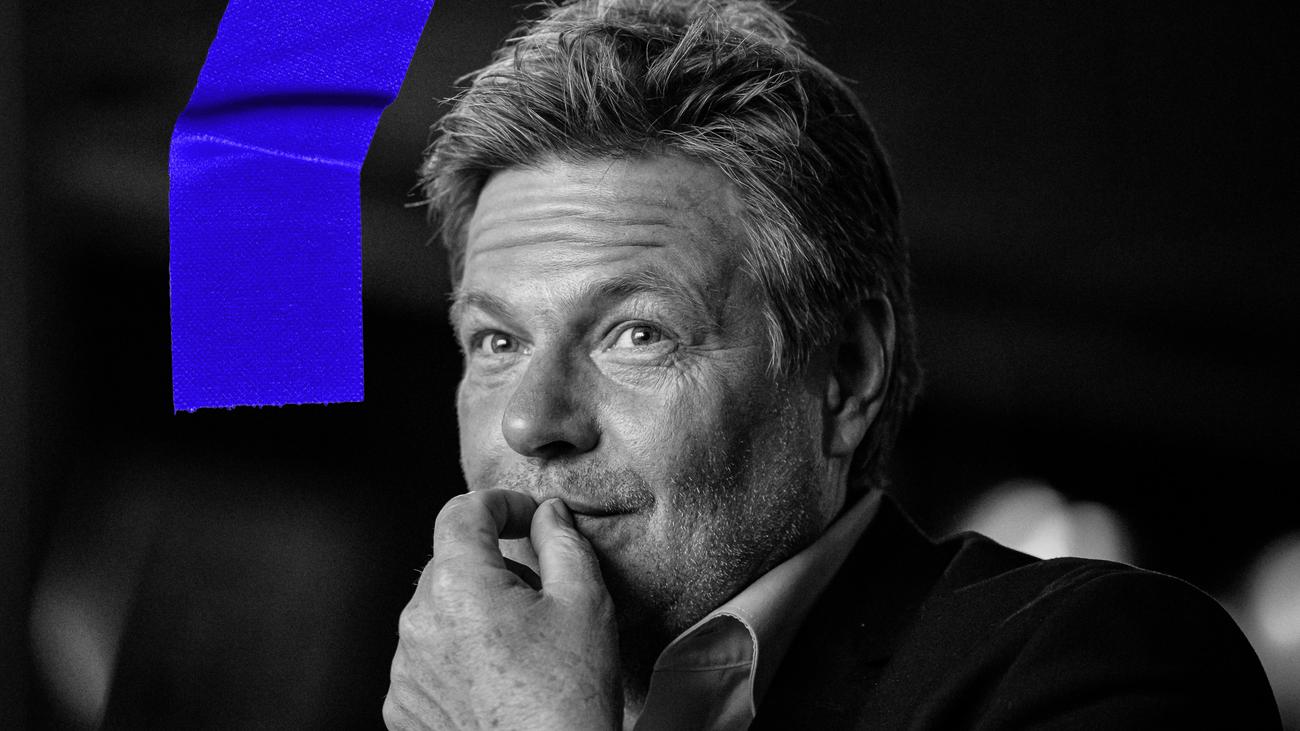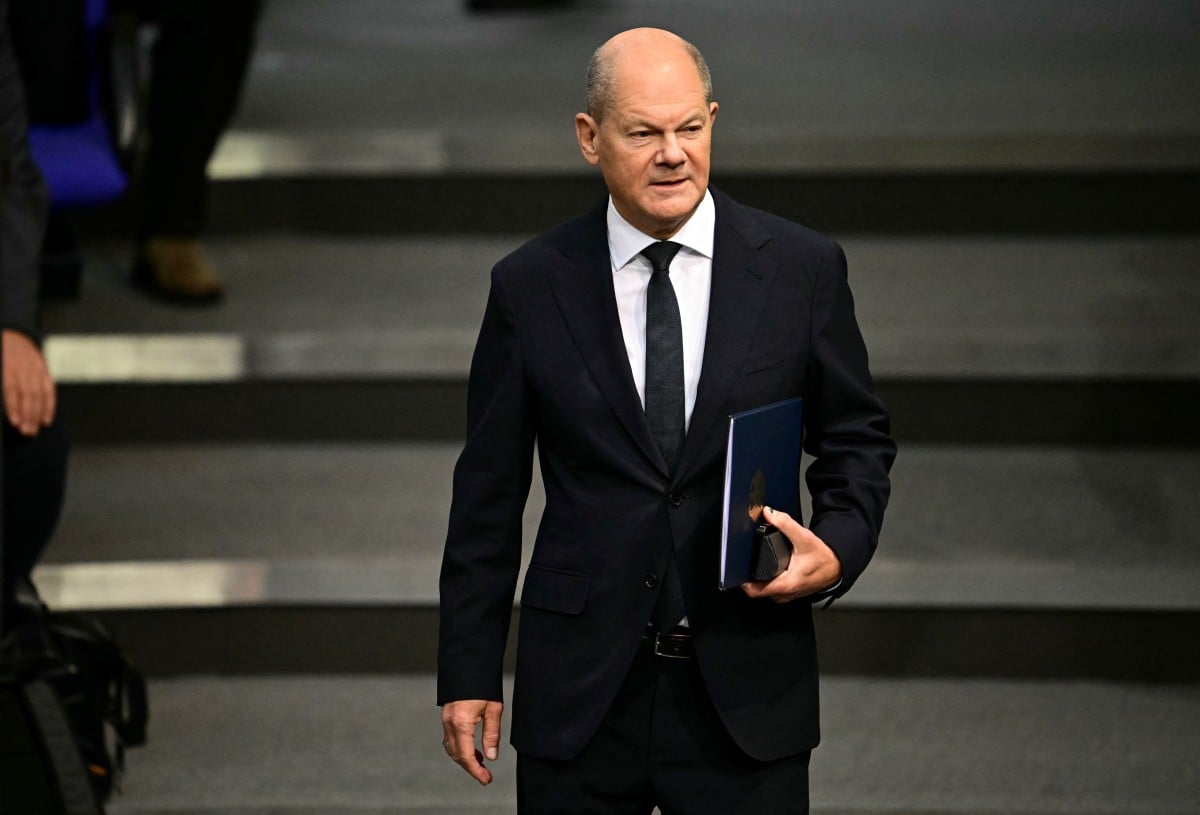For almost three decades it appeared to have been consigned to the scrap heap of history, a relic of East German communism considered as redundant and unsightly as the Berlin Wall and destined to fall victim to the wrecking ball.
But a former terrace cafe in the city of Potsdam, just west of Berlin, is being lauded as a showpiece of socialist realist architecture having been saved from demolition by a billionaire German businessman who has recast it as an art gallery.
The Minsk Kunsthaus or art house will display Hasso Plattner’s own extensive collection of East German art, a genre that has also more frequently than not been sidelined since the collapse of the GDR in 1989, but which is now enjoying something of a revival.

Elegant in its simplicity, the modernist construction – which was once a popular local meeting point and venue for discos and coming-of-age celebrations – has been given a new spiral staircase and a cafe with broad panoramic windows by the architects Linearama from Genoa. Its thought-provoking exhibition on landscape and allotments is attracting visitors and praise from art critics across Europe.
Hans-Dieter Rutsch, who documented the building’s reinvention in a film, has called it “an attempt to heal a wound”. Others have described it as a gesture of reconciliation.

The Minsk is something of a metaphor, say observers of German unification in 1990, for the way in which the executors of the process of merging the two countries ran roughshod over the feelings of East Germans. Regardless of their political stance, many felt their identities and biographies were erased as much of the social furniture of their lives was done away with.
Nowhere in the former GDR has architecture been such a focal point of this sense of neglect than in Potsdam.
The erstwhile seat of Prussian kings and the kaiser, and with an abundance of baroque architecture to match, its post-communist reconstruction has often been viewed as analogous with west German arrogance. Many rich blow-ins from the west, including fashion designers, TV presenters and newspaper publishers, bought up its historic villas and other buildings, many of which the East German regime had badly neglected. At the same time they supported the demolition of Soviet-era architecture, from high-rise housing blocks to college buildings, which they considered ugly and soulless.

Plattner, the co-founder of the software giant SAP, who lives in a classical lakeside villa designed by Mies van der Rohe which housed Winston Churchill during his brief time at the postwar Potsdam Conference in 1945, has long fought against criticism that he is one of the so-called besser-wessis – a play on the words know-it-all and westerner – who have contributed to soaring house prices.
The Barberini, his multimillion euro reconstruction of a baroque palace destroyed by wartime bombing, was opened to the public in 2017. It houses his considerable collection of impressionist artworks and has attracted international critical acclaim.
Local opposition towards restoring the Minsk by some who said it was an unwanted expression of “delayed ostaglie”, or nostalgia for the east, softened after recognition that the construction of two post-communist buildings, Potsdam’s train station and its leisure centre, nicknamed the “bunker baths”, which the Minsk faces, were arguably far uglier than anything the socialist era had served up.

“With their banal angularity and bleak aesthetic frugality you could consider them an allegory of capitalism, but then you would have little choice but to immediately revolt against this system, just as people revolted against the GDR,” the Frankfurter Allgemeine’s critic wrote.
Plattner too says that he has contempt for what he calls “wessi demolition rage” and it was that which motivated him to buy the Minsk from the city after it had stood empty for two decades and to rebuild it “as it once was”.
That includes keeping the original name, despite the disparaging claim by one critic it opens Potsdam up “to the risk that Belarus’s dictator, Alexander Lukashenko, feels he is being saluted”. To counter any criticism, the museum makes visitors fully aware of the plight of Belarus’ political prisoners, now believed to number more than 1,300, inviting them to participate in the social art project #FramedinBelarus.
The Minsk was one of the many “nationality” restaurants found in every East German municipality from the 1970s, celebrating the capitals of the Soviet Union. Potsdam was twinned with Minsk, which had a restaurant called Potsdam. For the interior of the original Minsk when it was built by the architect Karl Heinz Birkholz between 1971 and 1977, building materials including the entrance-way marble, wood carvings and copper lamps, were transported from Belarus and the menu featured Belarusian cuisine.
In the film documentary Birkholz talked of how painful he had found the neglect of his building. Giving the revamped version his blessing, he said: “She’s getting her time again.”




















Discussion about this post